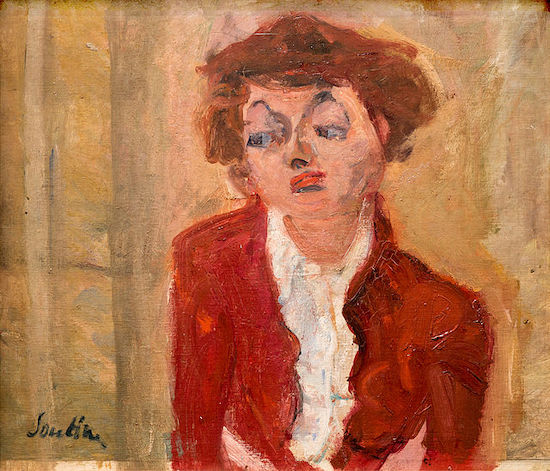I confess to suffering from artist-envy. I mean, rather than arranging the fly-specks and hen-scratches we call language on the blank page, who wouldn’t prefer assaulting a bare canvas with a horsehair brush loaded with colour? I’ve always thought – perhaps a bit romantically – that artists, with their more tactile tools, can elude the snares of language to speak directly through the heart, as well as the guts and genitals. It’s no wonder that so many writers have been compelled to write about the lives of artists, the messiness of those lives notwithstanding. After all, messiness can be a virtue in a dramatic narrative.
Witness Charles Strickland, the protagonist that Somerset Maugham, inspired by the life of Gauguin, conceived for his Moon and Sixpence. Strickland is a savage figure who leaves in his wake no end of casualties – an abandoned family, a broken friend, a suicidal lover – in his ruthless quest to realize his artistic genius. He’s an archetype, really, whose passion to express his own vision of terrible beauty eclipses everything else in his experience. The desire to paint is so powerful in him as to exert itself even through the leprosy that disfigures and ultimately blinds him.
The novelist Joyce Cary conjured a less sociopathic but finally just as unscrupulous artist in the character of Gully Jimson in The Horse’s Mouth. Here is the artist as trickster, who literally begs, borrows, steals, and connives in order to facilitate the creation of his original art. He’s a sunnier genius than Strickland but no less driven by his exalted vision, relentless in his search for the ideal surface for his work; and like Strickland, whose fantastical magnum opus was painted on the walls of a house that is ultimately burnt, the irrepressible Gully is content to paint his masterpiece on the wall of a building destined for the wrecking ball. For these visionaries, posterity is not the issue; the making is everything.
Then there’s Bernard Malamud’s eponymous hero Fidelman of his picaresque novel Pictures of Fidelman. Lacking an authentic talent, he wants to be an artist as much as to make art. Through a series of tragi-comic misadventures that place him firmly in the tradition of the classic Jewish schlemiel, he seeks an elusive artistic validity, a pursuit that leads him ever deeper into poverty and degradation. Though he fails miserably at attaining his ambition, Fidelman has yet available to him a happier ending than that of the driven demiurges of Maugham and Carey: he is able to effect a compromise that allows him to integrate his creative sensibility into what had been a diminished life. Here I suspect Malamud somewhat of wishful thinking.
Personally, I was never so interested in balancing life and art as in what happens when the balance is radically tipped from living the life in favour of making the art. What does a life look like when it is misshapen by a talent so outsized as to displace every other aspect of the artist’s personality?
I had the above-mentioned books (and others) in mind when I felt too the impulse to write a novel about an artist – an actual historical artist in my case. I first saw the paintings of Chaim Soutine in the Barnes Foundation in Philadelphia. The colours were kaleidoscopic, faces and bodies fluid and often macabre, landscapes tempest-tossed, slaughtered animals as if in the process of releasing their souls. I was spellbound and remained so long after. Then I read a book about the School of Paris, a loose confederacy of largely Eastern European Jews working in Paris in the early years of the 20th century. Among them was Soutine, an unlettered, morbidly shy, wretchedly impoverished Lithuanian bumpkin who had somehow been afflicted with a passion to paint. His character was such that he made a veritable romance out of self-loathing, calling his own self-portrait The Grotesque. He was the misfittest of misfits, a sort of super-schlemiel who – unlike Fidelman – was a failure even at failing, though not for want of trying. In short, he was my kind of guy.
You could say his life was the stuff of legend, since legend is mostly what remains of Soutine’s legacy. There are catalogues of exhibitions, brief mentions in the biographies of his peers, and little else. He had a mania for covering his tracks. As a writer of fiction, I became intrigued to the point of obsession with the mystery of his character. I felt drawn to retell the story of what is known about the maverick artist and free to imagine the rest. I couldn’t at first have explained the attraction, even to myself, but the more I identified with the man in the course of writing the book, the more I came to believe that, had I his genius, my life would have been a similarly glorious mess. At least if in nothing else but his hang-ups and phobias, Soutine c’est moi.
The Village Idiot by Steve Stern is published by Melville House


